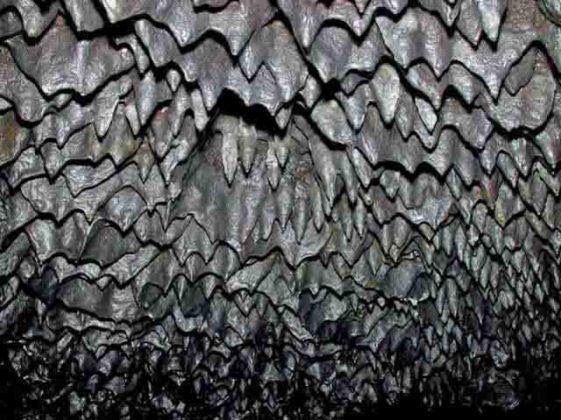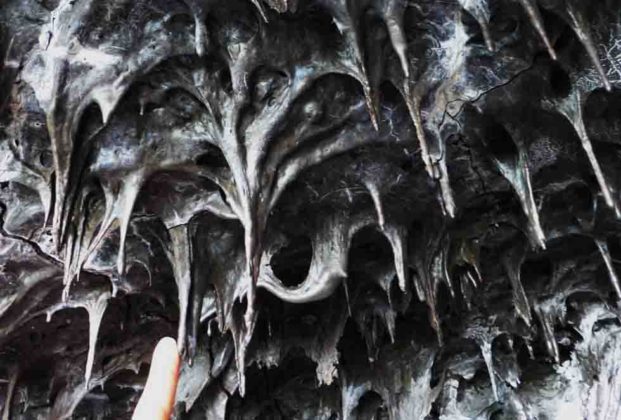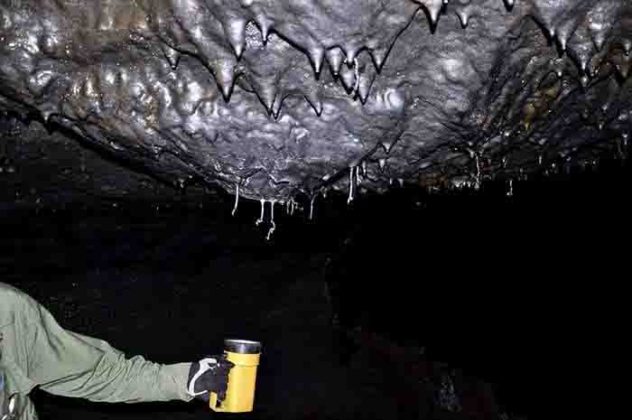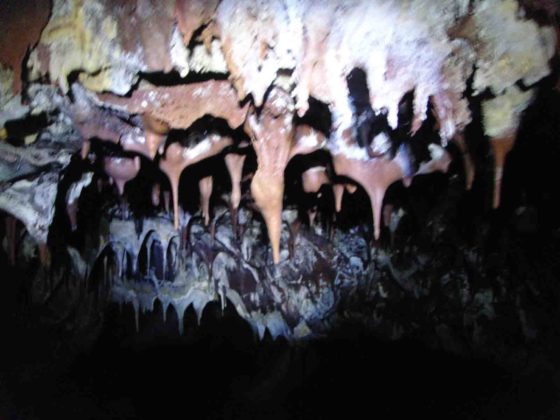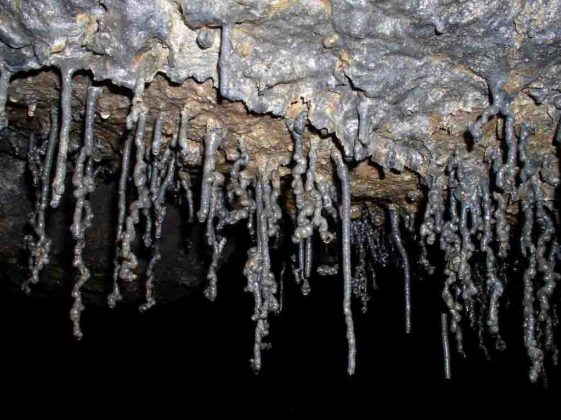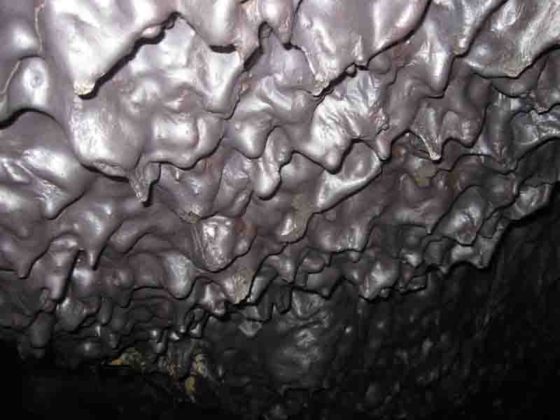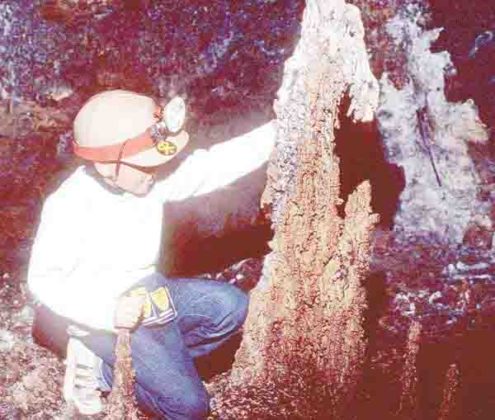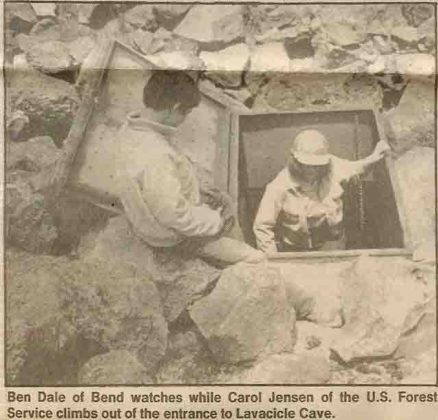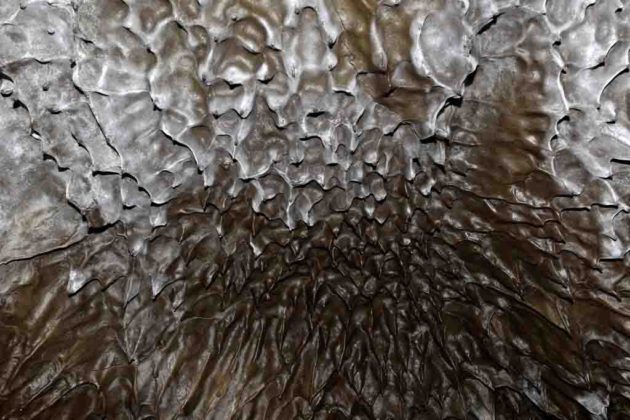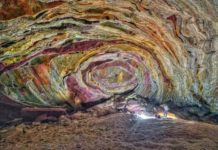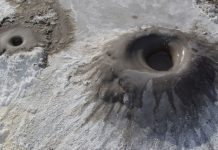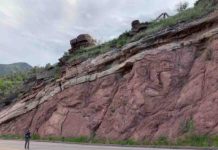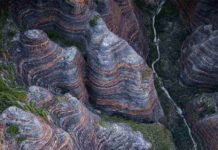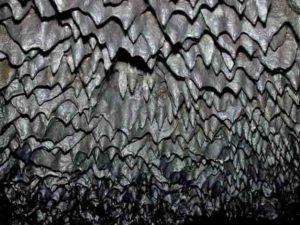
What does lavacicle mean?
A geological formation consisting of a quantity of lava that dripped from the roof of a cave as it cooled and hardened, leaving a rounded protrusion.
Lavacicles are small round-tipped stalactites that are found in lava tubes, the name comes from their resemblance to icicles. Lavacicle is really a generic term that encompasses several different types of stalactites found in lava tubes, which differ in their shape and morphology.
Geology of Lavacicle Cave
Lavacicle Cave was found by accident in 1959 by firefighter, Max Stenkamp. Lavacicle revealed itself with a strong draft of air that ascended through the smoke of the Aspen Flat Fire. Stenkamp and his men followed the draft, but went only as far as the lavacicles and came out dazzled by the spectacle. You’ll notice the same brisk draft that revealed the cave’s location to Stenkamp as you peer inside the entrance today but you won’t get to see any lavacicles.
Lavacicle Cave is unique because of the well-developed lava pinnacles rising from the floor. The formations resemble common stalagmites and stalactites, however, they were formed by cooling lava rather than by dripping water.
Geologists have observed that certain lava tubes served as channel ways for later lava flows. Evidence of these younger flows is seen along the walls in the form of projecting shelves and gutters, representing the various stages of flooding as the lava stream rose and fell. Apparently, Lavacicle Cave was temporarily filled to the roof by a younger flow. Immediately after this lava drained out of the tube, the molten material coating the ceiling dripped to the floor, building pinnacles of rock.
The tallest lavacicle was reported 6 feet high; hundreds of others scattered over the floor range from 1 to 2 feet in height. In contrast, lavacicles on the ceiling are only a few inches in length. Over the years many of these lavacicles have been vandalized and broken. One of the largest and most beautiful formations, the so-called Horse Head was actually stolen from the cave, never to be seen again.


